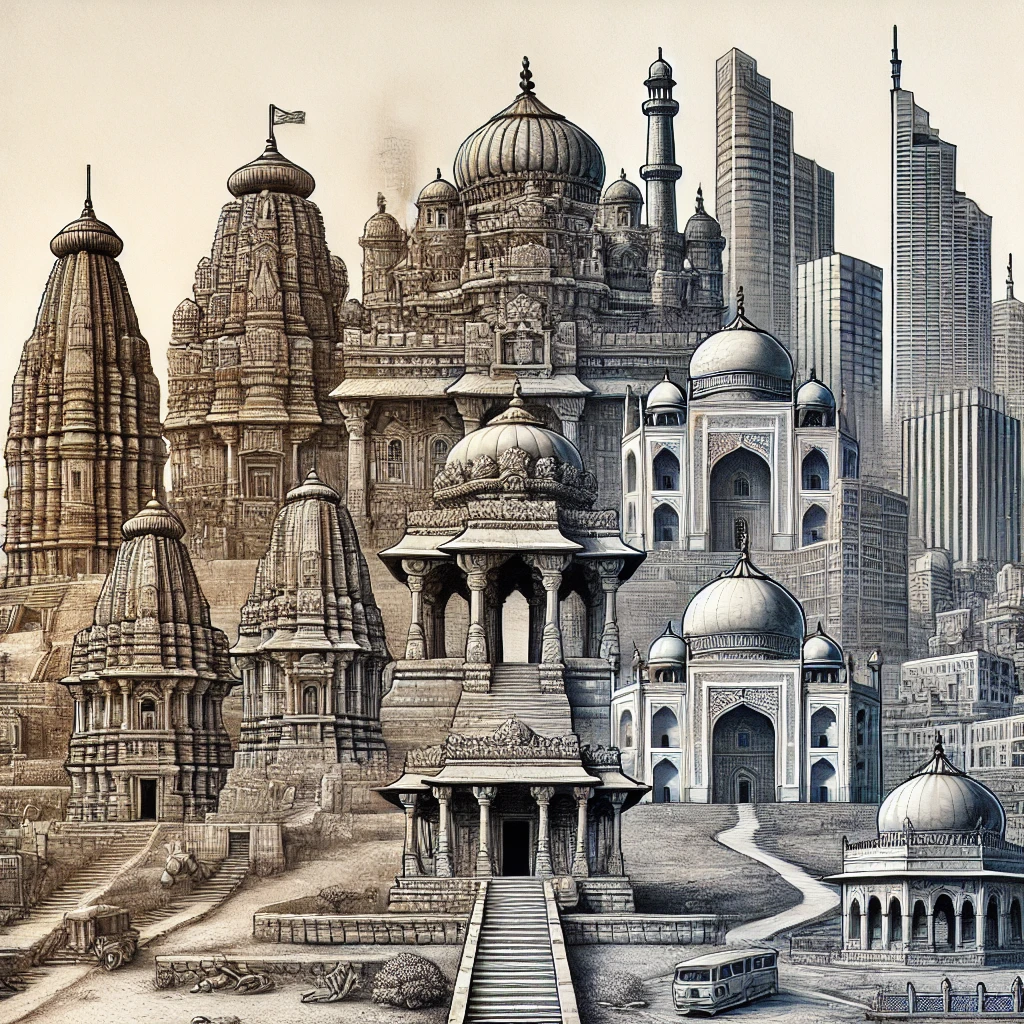Indian architecture is a tapestry woven with the cultural, historical, and technological advances of its people over millennia. Expression of ancient Indus Valley cities and modern metropolitan cities of India varies from an aesthetic utility perspective to one of absolute cultural symbolism. This article traces the historical development of Indian architecture into five successive prominent eras-the key characteristics, notable features, and socio-cultural influences of each era. Understanding these transformations would provide insight not only into India’s architectural heritage but also into the broader culture and historical context of the region.
Indus Valley Civilization
Around 2500 BCE, the Indus Valley Civilization, which employed such architectural prowess, is seen in the ruins of Harappa and Mohenjo-Daro. The use of baked bricks of uniform size was revolutionary, so well suited to durability and easy construction. The civilization was great with impressive public baths, granaries, and highly developed drainage systems, emphasizing cleanliness and public welfare. The accuracy in planning reflects a highly organized society that would understand the needs of the urban area it is part of.
Vedic Period Architecture
Transitioning from the urban sophistication of the Indus Valley, the Vedic Period (around 1500 BCE to 500 BCE) introduced predominantly religious architecture. The period was marked by the construction of fire altars. These were intricately designed to symbolize philosophical ideas and host fire sacrifices (Yajnas). Furthermore, these structures laid the foundational groundwork for later Hindu temple architecture. The emphasis shifted from communal utility to spiritual symbolism, with architecture serving as a medium to connect the terrestrial with the celestial.
Mughal Architecture
Mughal architecture, which flourished from the 16th to the 18th century, was a magnificent amalgamation of Indian, Persian, and Islamic styles. This era introduced architectural innovations such as the bulbous dome, slender minarets, and extensive use of decorative inlay work. Iconic structures like the Taj Mahal and the Red Fort not only demonstrate technical brilliance and artistic beauty but also reflect the Mughal’s love for lush gardens and symmetrical designs. These elements symbolized power and divine rule, fundamentally changing the landscape of Indian architecture.
Colonial Architecture
The period of British colonial rule from the 18th century to the mid-20th century had a profound impact on Indian architecture. The colonial era introduced European styles such as Gothic, Baroque, and Neoclassical into India’s architectural vocabulary. The construction of monumental public buildings, churches, and administrative offices, like the Victoria Memorial and Mumbai’s Chhatrapati Shivaji Terminus, showcased the power and reach of the British Empire. These structures blended local building materials with European design principles, leading to unique hybrid structures that were both imposing and intricate.

Modern Indian Architecture
Post-independence, India saw a resurgence in innovative architectural designs that sought to blend modernism with traditional Indian elements. Architects like Charles Correa and B.V. Doshi pioneered these efforts, focusing on sustainable building techniques and culturally relevant designs. Their works often incorporated passive cooling, local materials, and contextual designs that were both functional and reflective of Indian identities.
Conclusion
The Indian style of architecture has evolved into a tale of innovation and adaptation without end. Each age threw its own styles and techniques which, in return, created imprints on further developments. From the hard urban infrastructure of the Indus valley to the sophisticated modernism of the 21st century, Indian architecture reflects all the changes that are taking place in the social, cultural, and political spheres of the country. In other words, knowing this transformation would be a supplement to such an appreciation for architectural heritage as well as proof of the shaping of human civilization through architecture itself.



